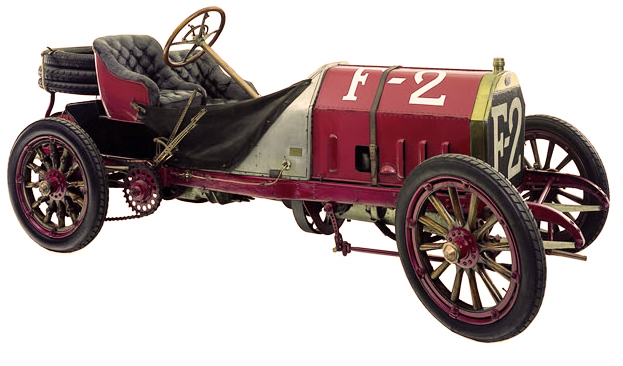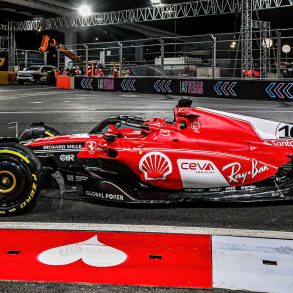Fiat 130HP F-2
Car: Fiat 130HP / Engine: 4 Cylinder in-line twin block / Maker: Fiat / Bore X Stroke: 180 mm X 160 mm / Year: 1907 / Capacity: 16,288 cc / Class: Grand Prix / Power: 130 bhp at 1,600 rpm / Wheelbase: – Track: – / Weight: 1025 kilo
Fiat’s new 5-story facility in Turin’s Lingotto district was state of the art and included a roof top test track where they could test their vehicles away from prying eyes. Fiat’s Grand Prix car for 1907 was meant to end French dominance once and for all. That year a new formula was introduced based on fuel consumption (a maximum of 30 liters per 100 km/9.42 mpg) without any weight or engine capacity limits. Fiat introduced a car designed by Giovanni Enrico and under the supervision of Carlo Cavalli which was powered by a four cylinder 16,286cc engine. The engine producing 130 bhp weighed more than 2000lbs! Each piston weighed almost ten pounds. Other features included hemi-spherical combustion chambers, centrally placed spark plugs and a Simms-Bosch magneto ignition. The driver changed gears via a multi-plate clutch and had as his disposal four speeds plus reverse through a chained transmission. To stop the car he had a foot brake on the differential gear and a hand brake on the rear wheels.
The first big race of the year was the Targa Florio in Sicily. Most races were run under different rules requiring a dedicated car. The circuit, if it could be called that covered 92 miles through such wild country that more than one driver carried a pistol to ward off wolves and/or bandits. The Fiat team scored a 1-2 with Felice Nazzaro leading Vincenzo Lancia.
The most important race on the calendar was the French Grand Prix at Dieppe. Fiat enter a three car team consisting of Vincenzo Lancia, Felice Nazzaro and Louis Wagner to drive their new 130HP monster. Nazzaro’s favorite technique was to hang back and let the leaders burn themselves or their cars out before he pounced and that’s exactly what he did. After inheriting the lead on the ninth lap from Duray’s Lorraine-Dietrich, the Fiat driven by Nazzaro led until the finish, completing the race over six and a half minutes ahead of second placed Ferenc Szisz. Nazzaro set fastest lap as well as coming home first at an average speed of 113.612 km/h. The car had proven its worth though disaster was narrowly averted with Nazzaro finishing with only half a lap of fuel left in his tank. For Fiat it was a very successful season capped by another Fiat victory at the Kaiserpreis.

















